HP Z210 SFF Workstation: Serious Power in Cramped Quarters
by Dustin Sklavos on August 29, 2011 8:10 PM EST- Posted in
- Systems
- IT Computing
- Intel
- HP
- Xeon
- Quadro
- Workstation
- SFF
- Enterprise
- NVIDIA
Application and Futuremark Performance
Unfortunately even in the business sector we're not fully able to escape from under Futuremark's shadow, but the SSD in our review unit should give the HP Z210 SFF some breathing room, and the Sandy Bridge architecture underpinning the Xeon E3-1245 will help tremendously.
In our review of the Dell Precision T1600, their representatives took issue and rightfully so at our inclusion of benchmarks from overclocked gaming desktops in our comparison. That's one area where this review will diverge; we're including only benchmarks from non-overclocked machines. It goes a long way towards narrowing down our results, but hopefully we'll get more workstations on hand in the future and build up a solid collection of data.
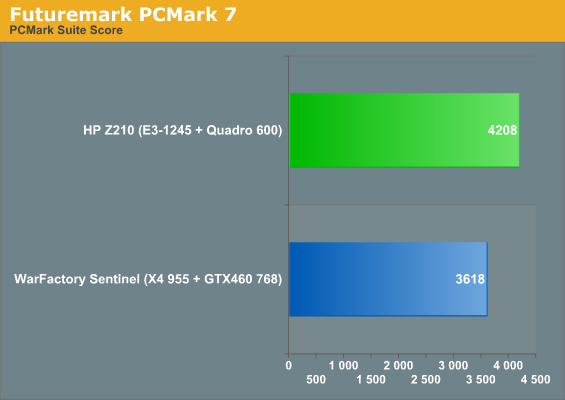
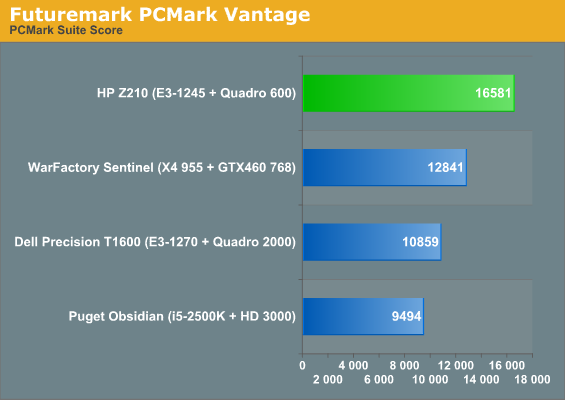
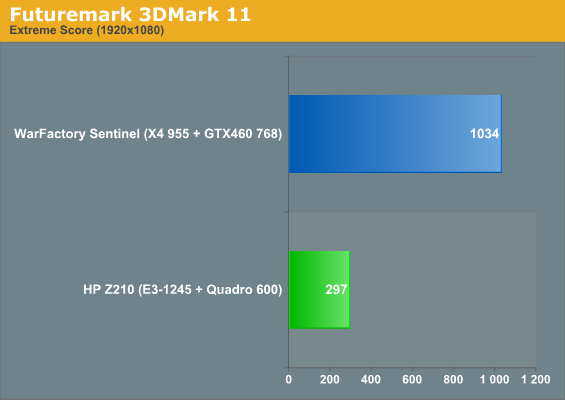
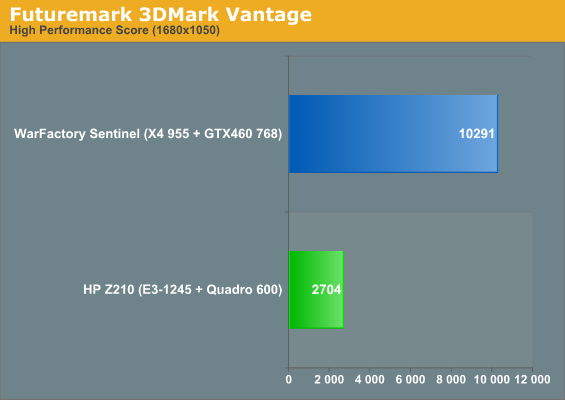
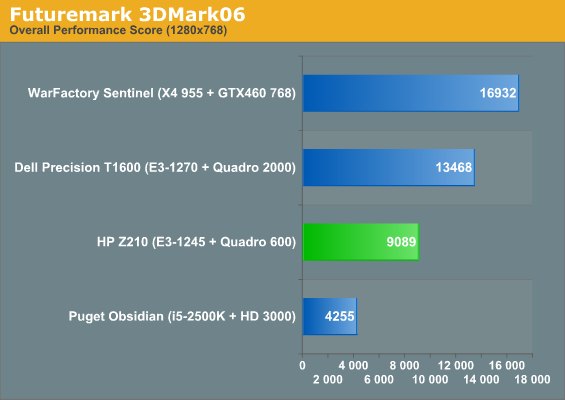
PCMark always skews heavily towards SSDs, so despite the Dell Precision T1600 having a faster processor and video card than the HP Z210, it still winds up losing in our PCMark tests. That's not really inaccurate as a representation of system usefulness, though, since the SSD will make a far more noticeable impact in overall responsiveness than a slightly higher CPU clock (unless you happen to run CPU-intensive workloads most of the time). As for the 3DMarks, we mainly use those scores to demonstrate that these aren't gaming graphics cards but do hold an appreciable performance advantage over Intel's integrated graphics.
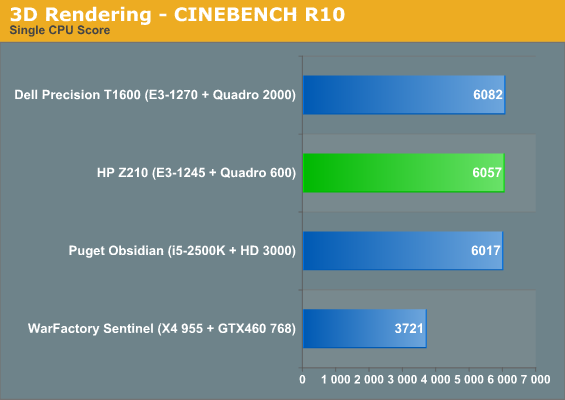
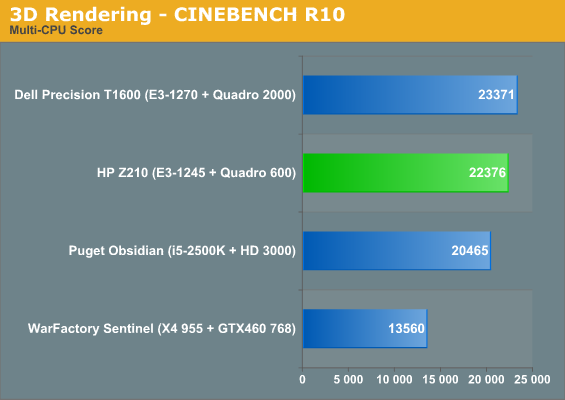
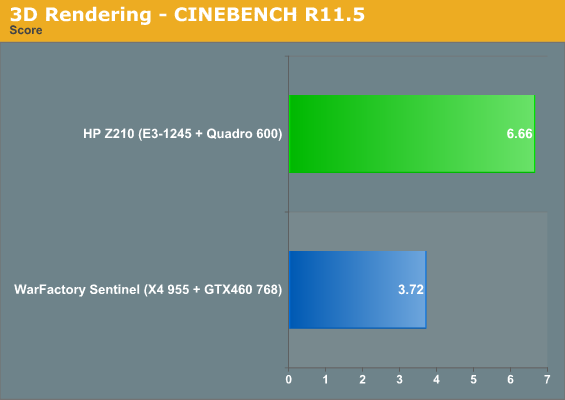
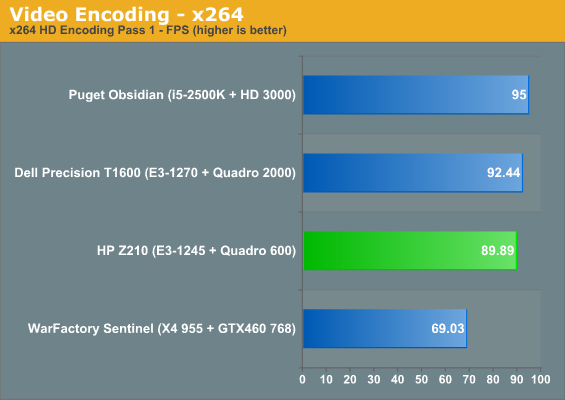
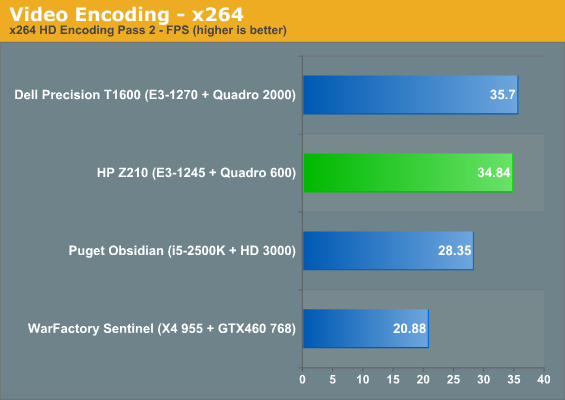
When we get to the proper application benchmarks, a couple of points immediately surface. First, the 100MHz clock speed difference between the E3-1245 and E3-1270 is wholly unremarkable. Second, the second pass on the x264 encoding benchmark sees the Core i5-2500K taking a substantial dive behind the identically-clocked Xeon E3-1245; perhaps the extra 2MB of L3 cache is paying off dividends here, or Hyper-Threading is playing a role. Third, AMD desperately needs Bulldozer. If the performance of the Phenom II X4 955 in the WarFactory Sentinel is any indication of how current Opterons are doing, AMD needs a much faster processor to get a bigger slice of that sweet, sweet enterprise market mark-up.










25 Comments
View All Comments
Dustin Sklavos - Wednesday, August 31, 2011 - link
It's my understanding some of that is covered by SPECviewperf.WillR - Tuesday, August 30, 2011 - link
I know this will seem out of left field and irrelevant to most. But it's nice to see a SFF system with a CF card slot. SD and its micro sibling have almost become a de facto standard with all other card types ignored, and that leaves Canon DSLR owners with limited options. Usually the solution ends up being an external card reader, and that's frankly annoying these days.Not that I use it also, but no Firewire? Kinda surprising.
Oscarcharliezulu - Wednesday, August 31, 2011 - link
Lots of talk and charts on gaming performance for a non gaming machine - seems like review filler to me sorry. I wouldn't mind a bit more analysis on benefits of the workstation class against consumer, and bench some real workstation apps. Love the SFF but they need to address the storage issue, perhaps I could use a NAS but then would spend a lot of time copying projects in and out. Comment to HP - it's horrifically ugly - what happened to good design? I'd be embarrassed to let clients see it.hampuras - Wednesday, September 7, 2011 - link
How is this good or not for Photoshopping? Or would be better with an iMac?Zumzifero - Tuesday, October 25, 2011 - link
I'm looking for a nice small workstation which I'd mostly use on Vectorworks (Cinema 4D) so I'm pleased to see this review and how well this little PC performs.I need to move it from time to time from one office to another, but not the an extent requiring a full time Laptop (for these task I'll stick on my faithful Macbook Pro).
I was checking HP pricing just now and saw how, on their site, they are advising about getting a FirePro V3800 on this class of systems. The Quadro 600 is available too but at a premium price.
So far I've found a lot of reviews of the FP3800 but no head to head with it's natural competitor, the Q600. Specs worth the Q600 fits somewhere in between the V3800 and the more performing V4800 (which is full height and costs as the Q600), so what would be nest for a little budget system? is the Q600 worth 100% more in price? Overall I may still go with Nvidia since VW has problem with Anti-aliasing on ATI and because of 512mb on board, but still I'm curious about seeing what's going on in the pro range of the graphic cards
The second question I'm pondering is: since HP is not cheap on components, how easy it is to install my own SSD?
It's not just for the money: I found it's damn hard to get a custom built system form HP (unlike form Dell), especially since here in Italy, so being able to buy a bare bone system and then adding graphic card and SSD of my choice would be piece of cake